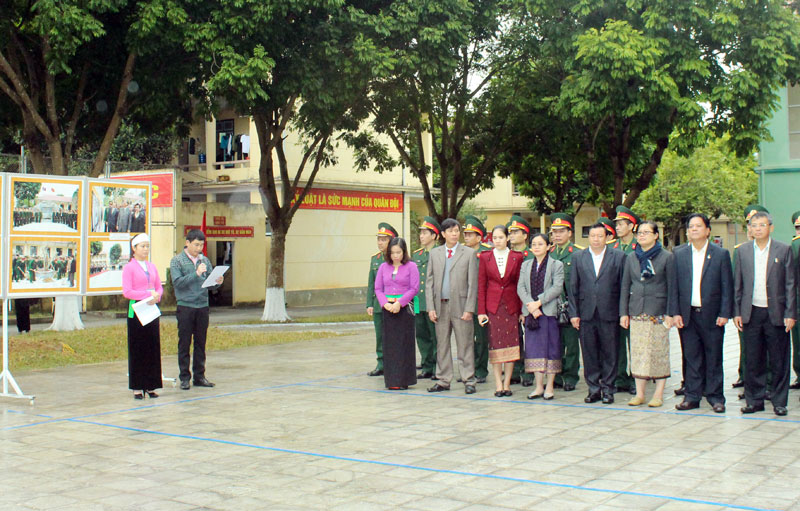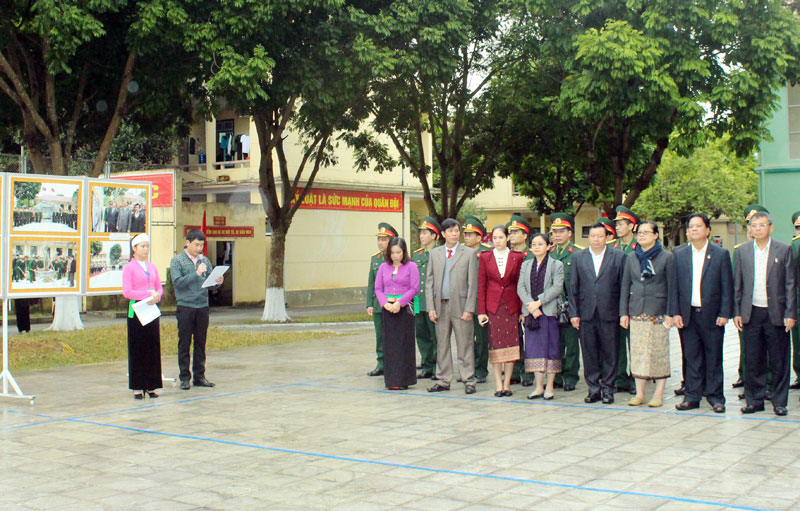
(HBO) - The People’s Council of Hoa Binh province on July 7 issued Resolution No. 267/NQ - HDND approving adjustments made to an investment plan for a project to restore and embellish a historical site related to the Lao People’s Revolutionary Party (LPRP) in the province. The site was where the LPRP held political training coursed and its second national congress.
 The Lao delegation visitsthe revolutionary historical site where the LPRP held political training
courses and its second congress in Hoa Binh.
The Lao delegation visitsthe revolutionary historical site where the LPRP held political training
courses and its second congress in Hoa Binh.
Accordingly, the provincial People’s
Council decided to adjust the total investment of project to over 47.1 billion VND,
to be disbursed in two phases.
In the 2016-2020, the total investment was 23 billion VND, including 18 billion
VND from the State budget, and 5 billion sourced from the local budget.
After 2020, the project will receive 24.12 billion VND sourced from the State
and local budget, and other lawful capital sources.
The provincial People’s Council asked the provincial People’s Committee to
direct the project’s investor and relevant agencies and organisations to
implement the resolution in line with the 2019 Law on Public Investment and
other regulations on project investment, construction and management.
The investor and relevant agencies were also ordered to effectively use the
investment capital, mobilise other lawful capital sources to implement the
project, prevent debts, and disburse capital sources on schedule to ensure the
project implementation schedule./.
With an increasingly vibrant and widespread emulation movement aimed at building cultured residential areas and cultured families, Yen Thuy District has been making steady progress toward improving both the material and spiritual well-being of its people, while fostering a civilized, prosperous, beautiful, and progressive community.
Once lacking recreational spaces and community facilities, Residential Group 2 in Quynh Lam Ward (Hoa Binh City) has recently received attention for the construction of a new, spacious, and fully equipped cultural house. The project followed the model of state support combined with public contributions in both labor and funding.
The "All people unite to build cultural life" movement, which has been effectively integrated with Kim Boi district’s socio-economic development goals, is fostering a lively spirit of emulation across local residential areas, hamlets, villages, public agencies, and enterprises. In addition, through the initiative, traditional cultural values are being preserved and promoted, while community solidarity and mutual support in poverty reduction and economic development are being strengthened.
A working delegation of the Hoa Binh provincial People’s Committee led by its Permanent Vice Chairman Nguyen Van Toan on June 11 inspected the progress of a project to build the Mo Muong Cultural Heritage Conservation Space linked to tourism services in Hop Phong commune, Cao Phong district.
Born and growing in the heroic land of Muong Dong, Dinh Thi Kieu Dung, a resident in Bo town of Kim Boi district, in her childhood was nurtured by the sweet lullabies of her grandmother and mother. These melodies deeply imprinted on her soul, becoming an inseparable part of her love for her ethnic group's culture. For over 20 years, this love for her hometown has driven Dung to research, collect, and pass down the cultural values of the Muong people to future generations.
In the final days of May, the Ethnic Art Troupe of Hoa Binh Province organized performances to serve the people in remote, mountainous, and particularly disadvantaged areas within the province. These were not just ordinary artistic shows, but they were the meaningful journeys aimed at spreading cultural values, enhancing the spiritual life of the people and contributing to the preservation of ethnic minority cultural identities.



 The Lao delegation visitsthe revolutionary historical site where the LPRP held political training
courses and its second congress in Hoa Binh.
The Lao delegation visitsthe revolutionary historical site where the LPRP held political training
courses and its second congress in Hoa Binh.